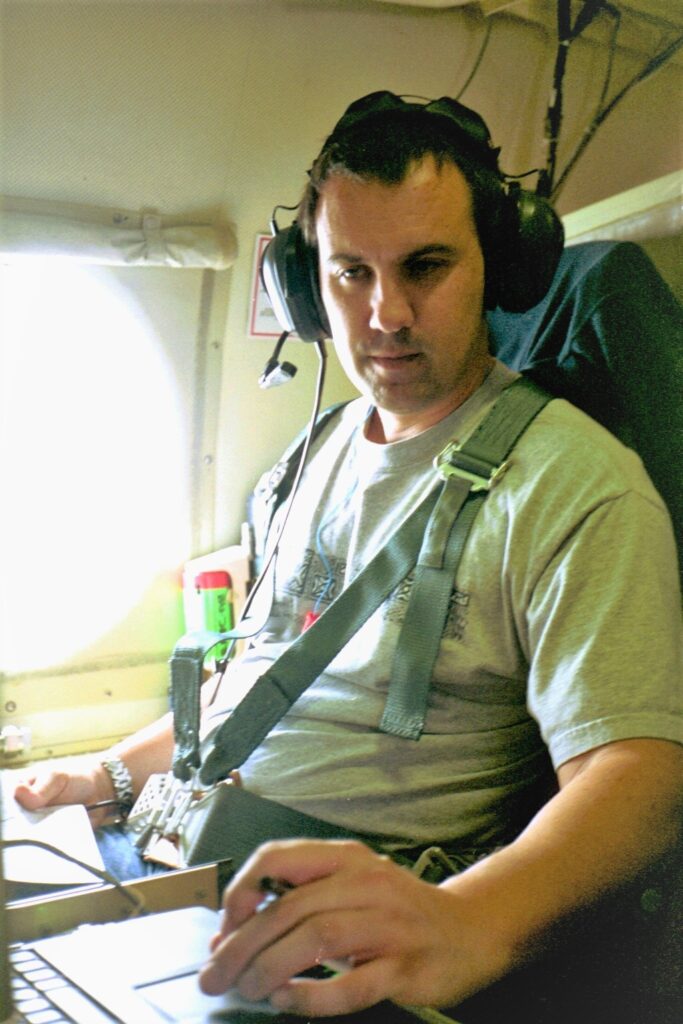Welcome to Carbon Brief’s DeBriefed.
An essential guide to the week’s key developments relating to climate change.
Warming-boosted wildfires
RECORD-BREAKING FIRES: In a first “state of wildfires” report, scientists laid out the impact of human-caused climate change on “unprecedented” wildfires during the past year, reported the Press Association. The research found that “high fire weather” seen in Canada, Greece and western parts of the Amazon from March 2023 to February 2024 was made three times, two times and 20 times more likely by global warming, respectively, the newswire said.
EXTRA EMISSIONS: The report estimated that carbon emissions from global wildfires in 2023-24 were 16% above average, the Press Association added, “with 8.2bn tonnes of CO2 put into the atmosphere, almost a quarter of that from fires in the Canadian boreal forests”. Canada’s wildfire emissions were almost as much “as would be expected over a decade of fires in normal circumstances”, added the Guardian.
GREEK TRAGEDY: Meanwhile, a deadly wildfire scorched an area of Greece twice the size of Manhattan over the past week, reported the Associated Press. The fire, to the north-east of Athens, damaged 22 businesses and rendered at least 78 homes uninhabitable, the newswire said. After its warmest winter on record and following long periods of little or no rainfall, Greece “also registered its hottest June and July and is forecast to record its hottest-ever summer”, noted Reuters.
Trump and Musk chat factchecked
‘FACT-FREE’: In a live-streamed conversation this week, former US president Donald Trump and billionaire Elon Musk made a series of “questionable and false claims” about climate change, reported BBC News. Described by veteran US environmentalist Bill McKibben as “the dumbest climate conversation of all time” (see the transcript), the two-hour chat was peppered with “fact-free assertions”, said the Guardian, including that rising sea levels would create “more oceanfront property”.
‘WILD LIES’: The New York Times fact-checked the conversation, including Trump’s claims that the Arctic National Wildlife Refuge has oil reserves “bigger than Saudi Arabia” and that people “never talk about nuclear warming”. A Heated factcheck focused on the “climate falsehoods spewed by Musk”.
ELECTION UNEASE: Meanwhile, analysis by a US thinktank showed that, were Trump to enact the climate policies in the rightwing “Project 2025” manifesto, it “would result in billions of tonnes of extra carbon pollution, wrecking the US’s climate targets, as well as wiping out clean energy investments and more than a million jobs”, the Guardian said.
- DEVASTATING DOWNPOUR: A rapid attribution study, covered by Carbon Brief, found that the extreme rains which triggered deadly landslides in Kerala’s Wayanad district last month were made 10% heavier by climate change.
- ROCKY ROADMAP: A draft report from the UN Food and Agricultural Organization that supports the growth of the livestock sector has drawn criticism for “pro-industry bias, cherry-picking data and even ‘disinformation’ about the environmental impacts of animal farming”, reported Climate Home News.
- DELEGATE DECLINE: Many businesses intend to either skip or send smaller delegations to COP29 because of concerns over logistics, Azerbaijan’s “oil-evangelising autocratic regime” and the prospect of Donald Trump being reelected, reported Politico.
- ‘COMPOUNDING HARDSHIP’: Heavy rains and floods in Sudan this year have killed at least 68 people and displaced 27,000, reported the Guardian. Flooding has inundated neighbourhoods and destroyed houses, farms and infrastructure, it added.
- ON HOLD: Around 40% of the biggest manufacturing investments announced in the first year of US president Joe Biden’s flagship industrial and climate policies have been delayed or paused, according to a Financial Times investigation.
The number of children – around one in five globally – that live in areas seeing twice the number of extremely hot days every year compared to just six decades ago, according to analysis by Unicef.
Latest climate research
- In surveys of US residents, a Climatic Change study found no evidence that using the terms “climate crisis” or “climate emergency” elicit more urgency than “climate change” or “global warming”.
- Assessing 180 countries, research in the Proceedings of the National Academy of Sciences found that declines in the carbon emission intensity of global agriculture have “stagnated” in recent years.
- A Nature Climate Change study, covered by Carbon Brief, found that limiting global warming to 1.5C is still possible, but made more challenging when considering the ability of governments to “effectively implement climate mitigation policies”.
(For more, see Carbon Brief’s in-depth daily summaries of the top climate news stories on Monday, Tuesday, Wednesday, Thursday and Friday.)
A freedom of information request by Carbon Brief has revealed the risks to prisoners in England and Wales from overheating in summer, according to internal assessments by the Ministry of Justice. Under a low-emissions scenario, consistent with keeping global warming below 2C by 2100, the assessment showed that 96 of the 122 prisons and young offenders institutions in England and Wales will be at “high” (red on the graphic above) or “very high” (dark red) risk of overheating in the summer months over 2020-39.
Hurricane hunting

This year’s Atlantic hurricane season is projected to be “extremely active”, with storms Beryl and Debby already bringing devastating winds and flooding to the US east coast, the Caribbean and Latin America.
To help forecast hurricanes accurately, the US National Oceanic and Atmospheric Administration (NOAA) has a team of “hurricane hunters”, who gather data by flying aircraft directly into storms over the Atlantic.
Carbon Brief speaks to Dr Rob Rogers, lead meteorologist in the hurricane research division, who has been flying these missions for decades.
Carbon Brief: Why do you use aircraft to hunt hurricanes?
Dr Rob Rogers: For forecasting, NOAA’s hurricane centre will use a variety of tools to identify – primarily – where a storm is and how strong it is. Satellites are very important because they have global coverage and operate 24 hours a day. But aircraft can give a lot more information on a storm’s inner core that satellites really can’t see. They have a hard time seeing through rain, for example, so getting an accurate measurement of the winds is hard. So we’ll send the planes out and the information they provide can give us a lot more confidence in where the storm is and how strong it is.
CB: How do you collect data on these flights?
RR: We have a variety of tools on the planes. We have radar on the plane, we have dropsondes that we drop out of the plane, as well as flight-level data and other new instrumentation to get at the inner core structure of hurricanes and how they evolve over time.
We identify atmospheric waves that are coming off Africa that are precursors of tropical storms. A typical mission to fly out to one and back again will take about eight hours. And we can turn around and get the plane up again about four hours later. If a hurricane develops, we’ll fly back-to-back-to-back missions – perhaps 15-20 times – over the course of its lifecycle.
CB: How is this data used?
RR: We take our aircraft observations, we transmit that to the ground in real time and that information gets incorporated into numerical [weather prediction] models. We also evaluate the models using the data that we collect to try to make the models better.
More broadly, a real challenge for forecasting hurricanes is the question of why some storms intensify rapidly and others don’t intensify at all. So a lot of my work is trying to better understand these processes and then develop tools to better predict how a storm evolves.
CB: What is it like to fly through a hurricane?
RR: It’s a unique experience, obviously. A lot of times it’s kind of boring, honestly, as it can take a couple hours to get to the storm. But once you get in there, depending on the nature of the storm, there’s a lot of convection within it and you might be hitting some turbulence.
With the really strong storms, you can get turbulence when you punch through the eyewall [at the centre of the storm]. This is where the strongest winds are, so the winds will spike up and then they’ll drop off really sharply as you punch through to the eye. So you can hit some pretty good bumps there. I’ve had some pretty good experiences on some flights, including hitting zero gravity a few times. I’ve been struck by lightning, too, but that’s not uncommon.
TIPPING TIMING: A New York Times feature unpacked the approaching tipping points in seven Earth systems, including the mass death of coral reefs and abrupt permafrost thaw.
‘FIGHTING BACK’: The Climate Question, a BBC World Service podcast, explored how Afghans facing floods and droughts are tackling climate change.
MINING MISERY: A Follow The Money investigation in Niger uncovered the damage caused by radioactive and toxic waste from uranium being mined for export to Europe.
- Climate Home News, energy transition reporter | Salary: US$25,000-$30,000. Location: Remote (based in Africa)
- UK Department for Energy Security and Net Zero, senior policy adviser – renewable energy | Salary: £40,950. Location: Aberdeen, Birmingham, Cardiff, Darlington, Edinburgh or Salford
- Mott MacDonald, principal consultant – climate | Salary: Unknown. Location: Vancouver, Canada
- The UK Green party, parliamentary media officer for Sian Berry MP | Salary: £39,000. Location: London
DeBriefed is edited by Daisy Dunne. Please send any tips or feedback to [email protected].
This is an online version of Carbon Brief’s weekly DeBriefed email newsletter. Subscribe for free here.
Sharelines from this story



















Discussion about this post